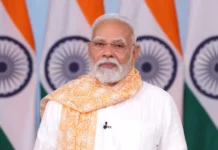 WASHINGTON: The World Bank has come out with a multi-billion (USD12-20 billion) four-year plan aimed at bringing down poverty levels in seven low-income Indian states, where majority of India’s poor live, to just 5.5 per cent in 2030 against 29.8 per cent in 2010.
WASHINGTON: The World Bank has come out with a multi-billion (USD12-20 billion) four-year plan aimed at bringing down poverty levels in seven low-income Indian states, where majority of India’s poor live, to just 5.5 per cent in 2030 against 29.8 per cent in 2010.
The seven low-income states are Bihar, Chhattisgarh, Jharkhand, Madhya Pradesh, Odisha, Rajasthan, and Uttar Pradesh.
World bank’s Country Partnership Strategy (CPS) for India (2013-2017) proposing a lending program of USD 3 billion to USD 5 billion each year over the next four years was discussed by its Board of Executive Directors.
Under the proposal, 60 per cent of the financing will go to state government-backed projects and half of this, or 30 per cent of total lending, will go to low-income or special category states (where public services face high delivery costs).
Under the previous strategy, 18 per cent of lending went to these states.
The proposal was announced for the first time by the World Bank President last week.
In a statement, the Bank said its proposal would increase the share of people living above the threshold where they are at risk of falling back into poverty to 41.3 per cent from 19.1 per cent.
If India were to grow as it did from 2005 to 2010 without making growth more inclusive, poverty would fall to only 12.3 percent while 33.6 per cent would remain above the vulnerability threshold by 2030, the Bank said.
“India’s seven low-income states, with 60 per cent of India’s poor, are now growing faster than the average, and so investments there have the potential for greater impact,” said Onno Ruhl, World Bank country director in India
“In our 60 years of working with India, the country has made great strides in overcoming poverty, and we are excited that India is the first country…to have these goals to reduce poverty and increase shared prosperity.
“We hope these goals will stretch us and our partners to make even greater efforts to help India’s 1.2 billion citizens enjoy a better future,” Ruhl said.
Guided by the priorities of the government of India’s 12 Five-Year Plan, the strategy sees sustaining high economic growth as critical to lifting millions out of poverty in a country that has the largest number of poor people in the world.
Infrastructure needs are massive; urban centers are growing exponentially, with cities adding at least an additional 10 million urban dwellers each year; and social programs need to be strengthened to generate inclusive growth, the Bank said.
According to the Bank, under the proposals the IFC will invest in areas such as innovative renewable and green projects, processed food, logistics and infrastructure, agri business, and finance and insurance.
“Continuing to enhance private investment in India’s low-income states, home to a substantial section of India’s poor, will remain central to IFC’s work in India.
As part of the World Bank Group strategy, we remain committed to increasing access to infrastructure, financial services, and low-income housing for the underserved while retaining our leadership in renewable energy projects,” said Thomas Davenport, IFC’s director for South Asia. –PTI




